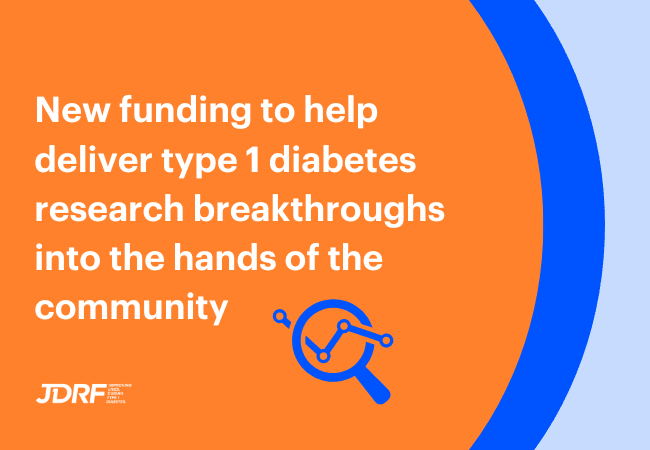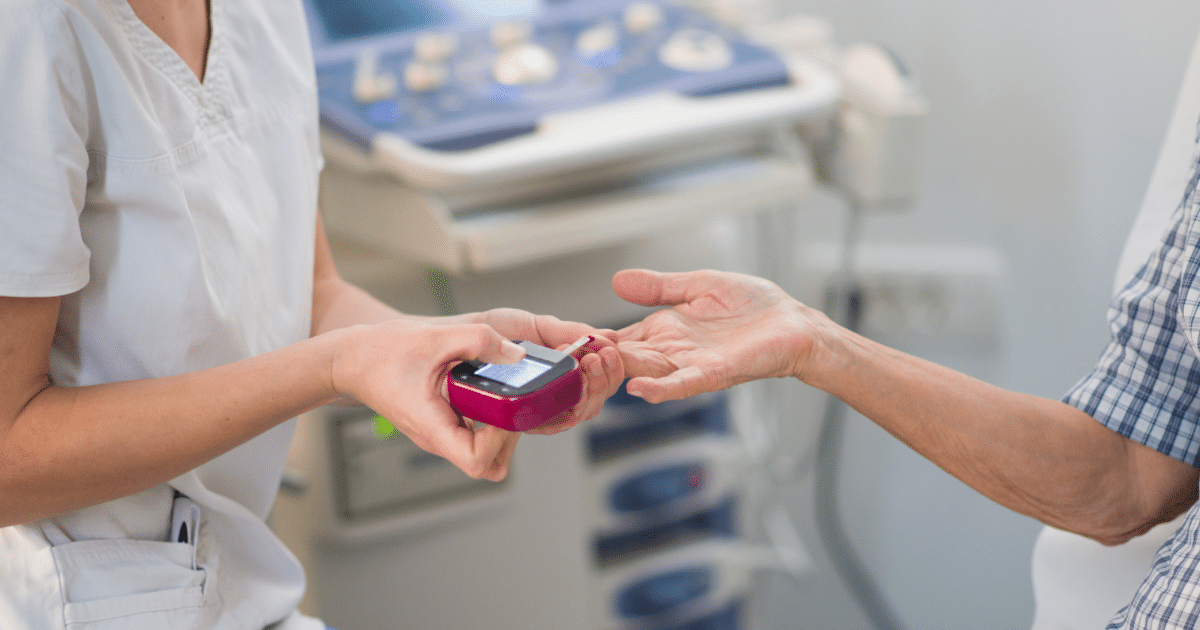Type 1 diabetes and women’s health: periods and menopause

We all know how powerful hormones can be in controlling menstrual cycles, so it’s no surprise that they can also affect blood glucose levels. This can also make life a bit more challenging for women living with type 1 diabetes (T1D).
In our book for adults living with T1D, Straight to the Point, we look at other women’s health issues, including sexual health, pregnancy, vaginal and urinary tract infections, and contraception. Download your free copy here.
Read on for a sneak peek of the women’s health T1D chapter of Straight to the Point, with information on periods, menopause and osteoporosis in women living with T1D.

Your periods and type 1 diabetes
The hormones that affect our menstrual cycles – which, in turn, affect our blood glucose levels – are due to two hormones, oestrogen and progesterone. When these hormones are at their highest level just before your period, they affect insulin, which may make your blood glucose levels rise, too. Increased progesterone, in particular, is associated with increased insulin resistance.
Some women don’t notice a difference at all. In others, blood glucose levels are lower before and during their periods. Often it’s the fasting blood glucose before breakfast that tends to fluctuate the most.
Higher levels of progesterone in the second half of your cycle (the luteal phase) can make you crave carbs and affect your motivation to exercise. This can all make it harder to manage your blood glucose levels.
Over time, you’ll need to discover your own pattern so you can adjust your insulin accordingly.
TIP: Being physically active in the week before your period can help control fluctuations in your blood glucose levels.
Menopause and type 1 diabetes
Women with type 1 diabetes may experience menopause earlier than other women.
As with your periods, menopause will cause your hormone levels to change, and this can also cause blood glucose levels to fluctuate. In fact, hypoglycaemia or hyperglycaemia can be one of the first signs of menopause for a woman with T1D.
In the years leading up to menopause, surges and reductions in oestrogen and progesterone can affect all women – regardless of their T1D status – in various ways, such as mood changes, increased PMS signs, periods that are more or less frequent, and heavier or lighter blood flow.
For some women living with T1D the hormonal changes are scarcely noticeable. For others, fluctuations in blood glucose levels can mean that they need to monitor more frequently and adjust their insulin intake.
One of the major difficulties is that some symptoms of diabetes and menopause can be very similar. Both menopause and low blood glucose can cause dizziness, elevated body temperatures, moodiness and short-term memory loss.
High blood glucose, like menopause, can cause fatigue. The only way to tell if your symptoms are diabetes-related or menopause-related is to check your blood glucose.
During menopause it’s important to maintain an active lifestyle. Some women stop exercising and begin to gain weight, which in turn affects their ability to absorb insulin and control their blood glucose.
Sometimes during menopause, women find they have negative sexual side effects, such as vaginal dryness, an increase in yeast infections and urinary tract infections. See your doctor to discuss how you can manage these side-effects, with possible hormone replacement therapy or changes to your insulin.
The key to staying healthy after menopause for women with type 1 diabetes is the same as for women without diabetes. Try to eat regular, well-balanced meals, stay as physically active as possible, have regular check-ups with your doctor, and ensure that you manage your diabetes as well as you can. While there may be times when you ignore some (or all!) of these recommendations, remember that it’s what you do most of the time that counts.
Osteoporosis and type 1 diabetes
Osteoporosis is a condition in which bones become thinner and more porous, making fractures more likely.
Although osteoporosis is common in women as they age because of the reduction of oestrogen after menopause, women with type 1 diabetes have a higher incidence of osteoporosis if blood glucose levels have been high for a prolonged period. They may also develop osteoporosis prior to menopause.
As you approach your 50s, make sure your doctor tests you for signs of osteoporosis.
Learn more about type 1 diabetes and women’s health issues – including sexual health, vaginal and urinary tract infections, and contraception – in our free book for adults living with T1D. Download your free copy here.





